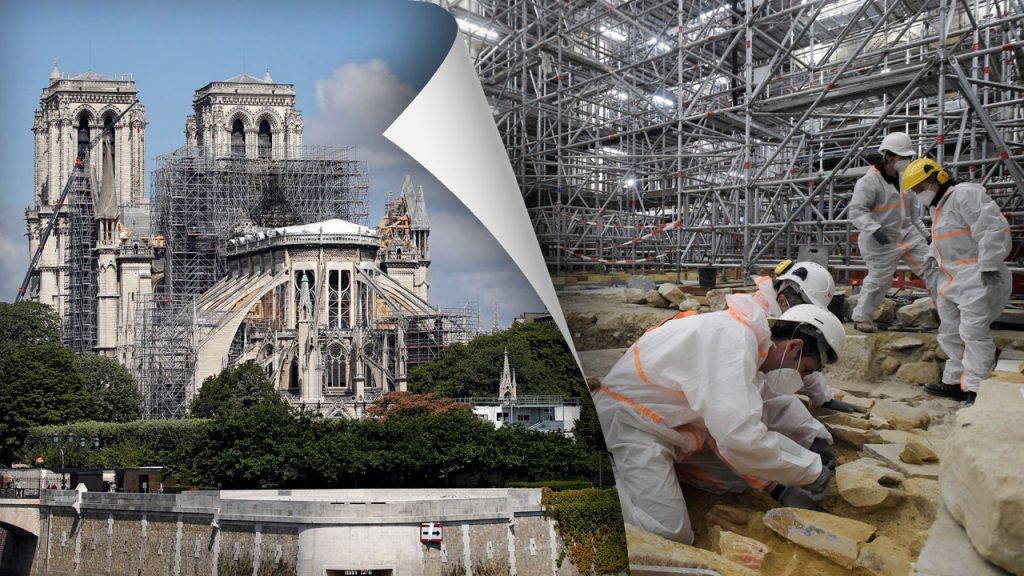Since the devastating fire at Notre-Dame Cathedral in Paris in 2019, a large restoration project has been ongoing. In addition to rebuilding, archaeologists have been exploring the site, uncovering thousands of ancient artifacts. These discoveries often lead to more questions that require further research to fully understand the significance of the find. In 2022, two lead sarcophagi were found under the transept crossing of the cathedral, with one identified as Antoine de La Porte. The other is believed to be the famous French poet Joachim du Bellay, based on evidence such as medical conditions and lifestyle matching historical records.
Archaeologists have also uncovered unique artwork in England dating back to the early 2nd century. The discovery of these artifacts provides valuable insights into the history and culture of the region during that time period. The research team led by Éric Crubézy has developed a hypothesis that the unknown individual found in the sarcophagus at Notre-Dame Cathedral could be Joachim du Bellay, based on various factors including medical history and lifestyle characteristics. However, there are still doubts among researchers, as some elements do not align with historical records of du Bellay’s upbringing in Anjou.
In addition to the discoveries in France, a rare ancient Celtic artifact was unearthed in Poland, dating back 2,300 years. The metal object was excavated from a charcoal pit, shedding light on the ancient Celtic culture in the region. The findings of these artifacts provide valuable insights into the daily lives, beliefs, and practices of ancient civilizations. Despite the evidence supporting the hypothesis that the unidentified individual found at Notre-Dame Cathedral could be Joachim du Bellay, there are still conflicting opinions among researchers regarding the accuracy of the claims.
Since the fire in 2019, over 100 burials have been identified, with 80 excavated in the cathedral, according to the French National Institute for Preventive Archaeological Research (INRAP). More than 50 archaeologists have been working on 14 operations at the site, uncovering a wealth of historical artifacts and remains. The reopening of the cathedral is planned for December 2024, marking the end of a lengthy restoration process and the beginning of a new chapter in the history of Notre-Dame Cathedral. The ongoing archaeological excavations and discoveries at the site continue to provide valuable insights into the rich history and cultural heritage of France.


